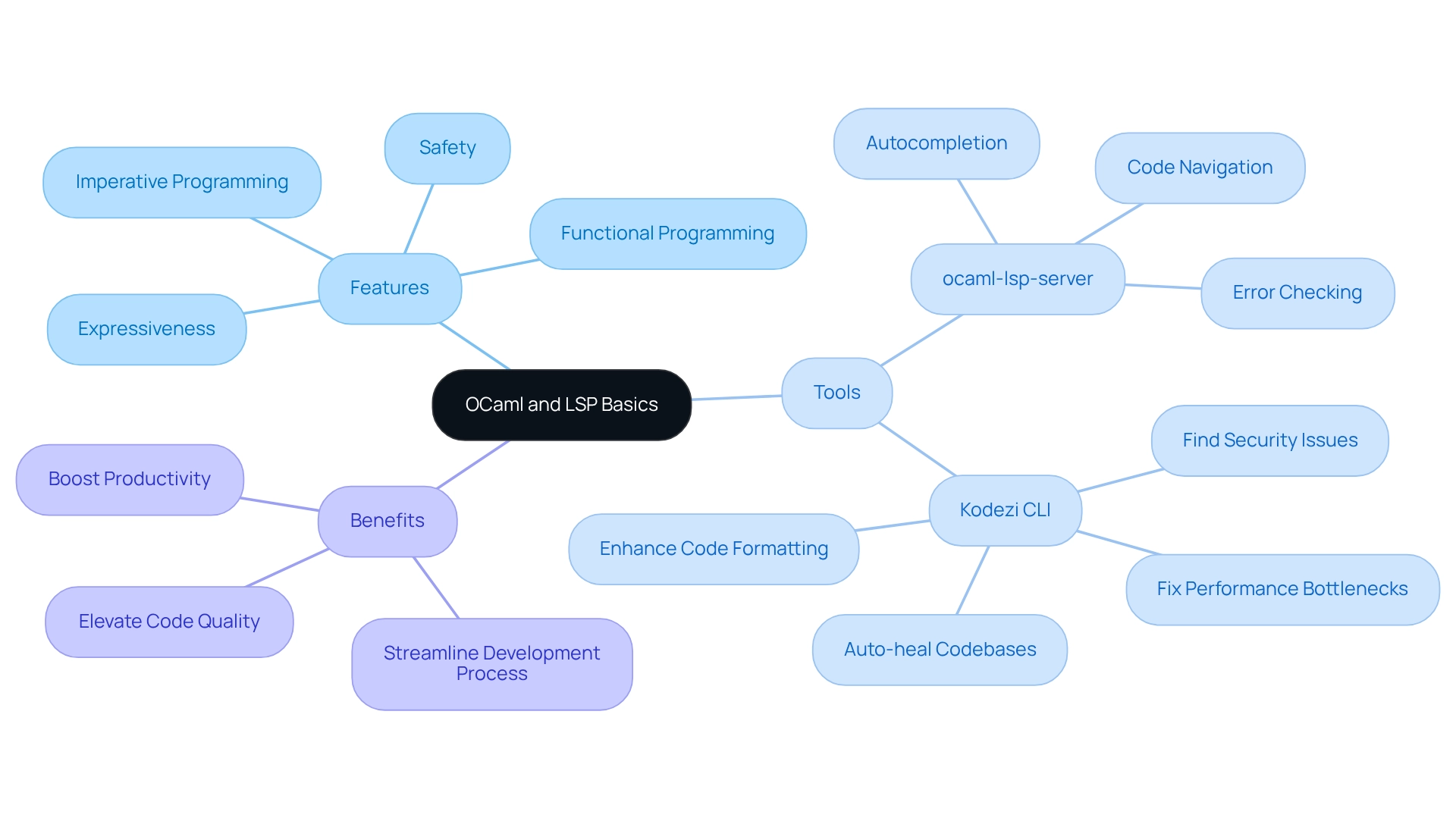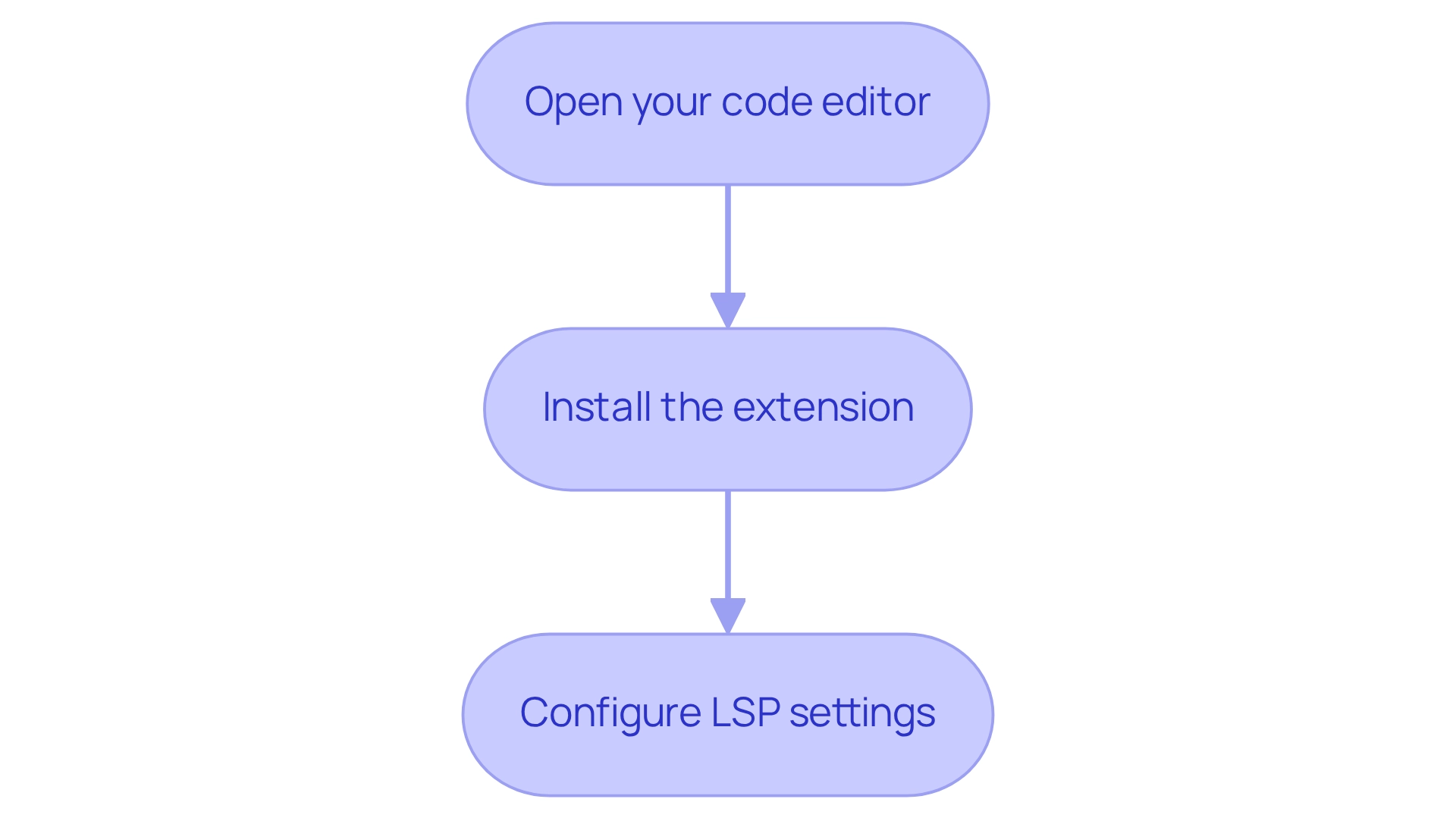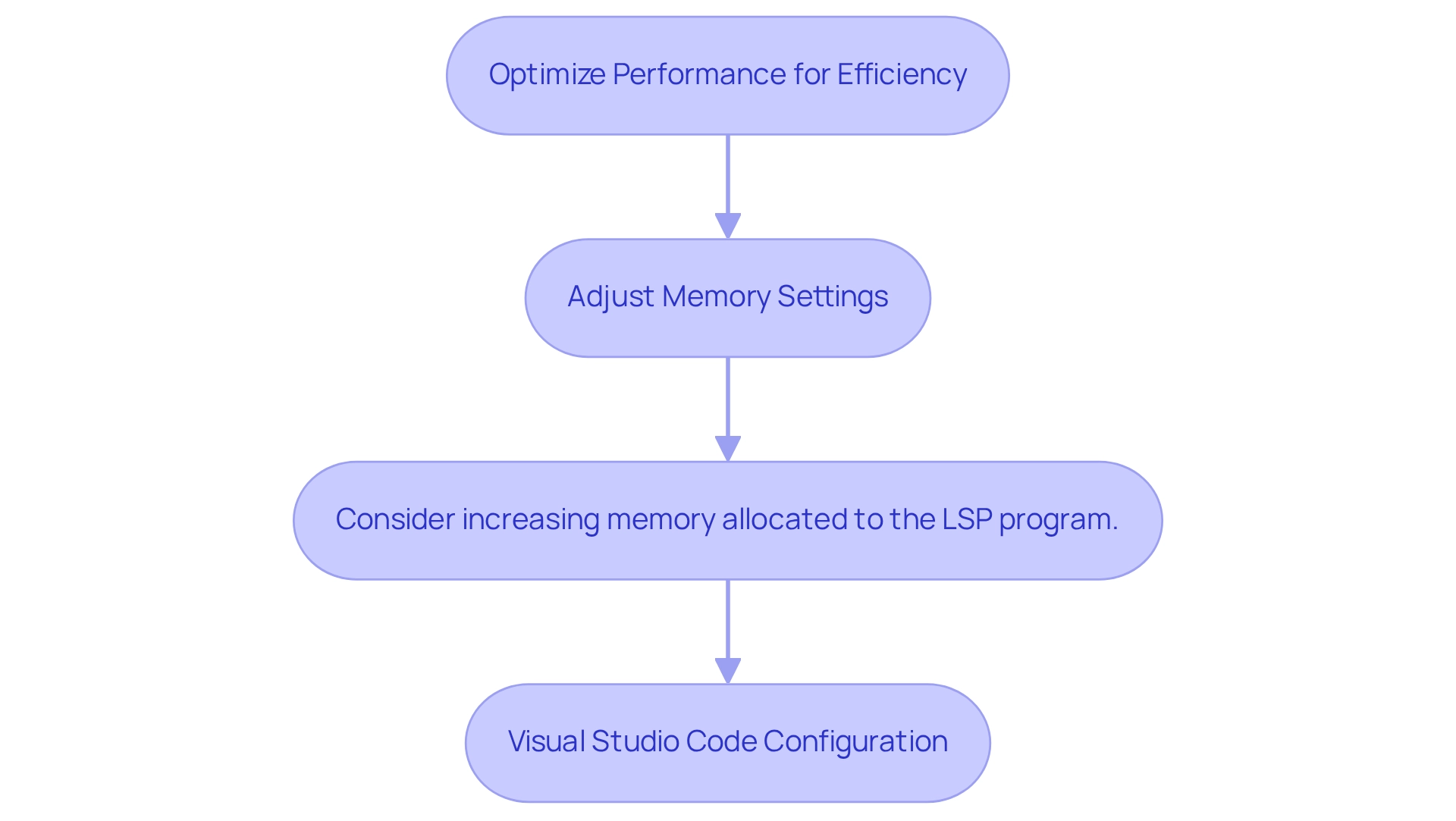Overview
The article addresses the coding challenges developers frequently encounter, such as inefficiencies and errors. It highlights how effectively setting up the OCaml-LSP server can significantly enhance coding efficiency. By providing a comprehensive step-by-step guide on installation, configuration, performance optimization, and troubleshooting, the article illustrates how these procedures can lead to substantial improvements in productivity and code quality. Key features like autocompletion and error checking are emphasized, showcasing their role in streamlining the coding process.
Furthermore, readers are encouraged to consider how they can leverage these essential features to overcome common obstacles in their development work. The article details the benefits of using the OCaml-LSP server, including increased productivity and enhanced code quality. By following the outlined steps, developers can ensure they fully utilize the server's capabilities.
In addition, the article invites readers to explore the tools available on the platform, positioning the OCaml-LSP server as a vital resource for developers aiming to elevate their coding practices. By engaging with this content, developers can reflect on their current practices and consider how implementing these strategies could lead to more efficient coding experiences.
Introduction
In the world of modern software development, developers often face significant coding challenges that can hinder their efficiency and productivity. Mastering programming languages and their associated tools is essential to overcoming these obstacles. OCaml, a statically-typed functional programming language, stands out for its expressiveness and safety. Additionally, the Language Server Protocol (LSP) enhances the coding experience by enabling seamless communication between editors and language servers.
This article delves into the essentials of setting up and optimizing the OCaml-LSP server, offering a comprehensive guide that covers:
- Installation
- Configuration
- Performance optimization
- Troubleshooting
By equipping developers with the knowledge to harness these powerful tools, it paves the way for a more productive coding environment.
Understand OCaml and LSP Basics
Coding challenges can often hinder developers' productivity and code quality. This powerful, statically-typed functional programming language is recognized for its expressiveness and safety, supporting both functional and imperative programming paradigms. Such versatility allows it to cater to various applications. Furthermore, the ocaml-lsp-server facilitates seamless communication between code editors and language resources, providing essential features like autocompletion, error checking, and code navigation. In addition, by integrating Kodezi CLI, developers can auto-heal codebases, fix performance bottlenecks, find security issues, and enhance code formatting. These capabilities significantly boost productivity and streamline the development process. Have you considered how these features could transform your coding practices? Understanding Kodezi's offerings is crucial for harnessing the full potential of this programming language in your development environment.
By leveraging Kodezi, you can not only improve your workflow but also elevate the quality of your code. Explore the tools available on the platform to experience these benefits firsthand and take your coding to the next level.

Install OCaml-LSP-Server
To install the OCaml-LSP server effectively, follow these essential steps:
-
Install OPAM: OPAM is the package manager for OCaml. Start by installing it according to the guidelines available on the OPAM installation page.
-
Set Up Your OPAM Switch: Create a dedicated OPAM switch for your project by executing:
opam switch create <switch-name> -
Install OCaml-LSP: After setting up your switch, install the OCaml-LSP server with the command:
opam update && opam install ocaml-lsp-server -yThis command ensures a streamlined installation process, contributing to a higher success rate in setting up the server.
-
Verify Installation: Confirm the installation's success by running:
ocamllsp --versionA successful installation will display the version of the OCaml-LSP server.
Recent trends indicate a growing reliance on OPAM for package management, as users increasingly automate installations to enhance efficiency. There is potential for future automation of the language server protocol using Emacs Lisp, which could further simplify the setup process.
A case study titled "Challenges in Setting Up a Functional Language with Emacs" highlights the difficulties encountered when configuring the development environment in Emacs, particularly in managing documentation and the initial struggle to configure LSP effectively. Despite these challenges, users have successfully established functional Emacs/LSP setups, demonstrating the effectiveness of these installation steps. As you refine your setup, consider binding additional functions to keys for improved workflow. As Tim McGilchrist noted, "The corresponding configuration I was using previously is:
(use-package eglot
:config
(define-key eglot-mode-map (kbd "C-c C-t") #'eldoc-print-current-symbol-info)
:hook ((tuareg-mode . eglot-ensure)))
This practical advice can help enhance your Emacs configuration.
Configure Server Settings
Configuring the ocaml-lsp-server can enhance your coding experience and address common challenges that developers face. To get started, follow these steps:
- Open your code editor: Launch the code editor you are using, such as Visual Studio Code, Neovim, or Emacs. Have you considered how your choice of editor impacts your workflow?
- Install the extension: For Visual Studio Code, install the Platform extension from the marketplace. If you're using Neovim, ensure you have
nvim-lspconfiginstalled. This installation is crucial for enabling language server features. - Configure LSP settings: In your editor's settings, add the following configuration:
{

Optimize Performance for Efficiency
To enhance the performance of the ocaml-lsp-server, developers frequently face a variety of coding challenges. Here are some effective strategies to optimize your experience:
- Adjust memory settings: Have you considered increasing the memory allocated to the LSP program? By modifying your editor's settings, you can enhance performance significantly. For instance, in Visual Studio Code, you might set:
{
"ocaml.lsp.memory": "2GB"
}

Troubleshoot Common Issues
When developers face challenges with the ocaml-lsp-server, it’s essential to follow a structured approach to troubleshooting. Begin by checking the installation. Ensure that the ocaml-lsp-server is correctly installed by running:
ocamllsp --version
If this command fails, a reinstallation of the ocaml-lsp-server may be necessary.
Next, verify your configuration. Double-check your editor's configuration settings for any typos or incorrect paths, ensuring that the path to the ocaml-lsp-server is accurate.
Furthermore, consider restarting the system. Sometimes, simply rebooting the LSP system can resolve issues. Utilize the command palette in your editor to restart the service.
Finally, consult the logs. Checking the output or logs from the ocaml-lsp-server can provide error messages that offer valuable clues about the issue. This information is crucial for diagnosing problems effectively.

Conclusion
Mastering OCaml and the Language Server Protocol (LSP) presents a significant opportunity for developers to enhance their productivity and coding experience. By grasping the foundational aspects of OCaml—its expressiveness and safety—alongside the capabilities of LSP, developers can cultivate a more efficient development environment. The outlined installation and configuration steps serve as a solid roadmap for setting up the OCaml-LSP server, ensuring seamless integration into various code editors.
Furthermore, performance optimization is vital for maximizing the effectiveness of the OCaml-LSP server. Implementing strategies such as:
- Adjusting memory settings
- Utilizing Dune for project management
- Monitoring performance metrics
can lead to a more responsive coding experience. In addition, possessing troubleshooting techniques empowers developers to swiftly address any issues that arise, allowing them to concentrate on writing quality code rather than being hindered by technical difficulties.
In conclusion, leveraging OCaml with the LSP can truly transform the software development process, making it not only more productive but also enjoyable. By adhering to the steps and strategies discussed, developers can unlock the full potential of these powerful tools, ultimately resulting in better software solutions and a more efficient workflow. Embracing these technologies enhances individual productivity and contributes to the overall advancement of software development practices.
Frequently Asked Questions
What are the main advantages of using OCaml for development?
OCaml is a powerful, statically-typed functional programming language known for its expressiveness and safety. It supports both functional and imperative programming paradigms, making it versatile for various applications.
How does the ocaml-lsp-server enhance the coding experience?
The ocaml-lsp-server facilitates seamless communication between code editors and language resources, providing essential features such as autocompletion, error checking, and code navigation, which significantly boost productivity and streamline the development process.
What additional benefits does integrating Kodezi CLI offer to developers?
Integrating Kodezi CLI allows developers to auto-heal codebases, fix performance bottlenecks, identify security issues, and enhance code formatting, all of which contribute to improved workflow and code quality.
What are the steps to install the OCaml-LSP server?
The steps to install the OCaml-LSP server are: 1. Install OPAM, the package manager for OCaml. 2. Set up your OPAM switch by creating a dedicated switch for your project. 3. Install OCaml-LSP using the command opam update && opam install ocaml-lsp-server -y. 4. Verify installation by running ocamllsp --version to check the server version.
What challenges might developers face when setting up a functional language with Emacs?
Developers may encounter difficulties in configuring the development environment in Emacs, particularly in managing documentation and effectively configuring the Language Server Protocol (LSP). However, many users have successfully established functional Emacs/LSP setups despite these challenges.
How can users improve their Emacs configuration for OCaml development?
Users can enhance their Emacs configuration by binding additional functions to keys for improved workflow, such as using the use-package directive to define key bindings for eglot, which aids in providing symbol information within the editor.




